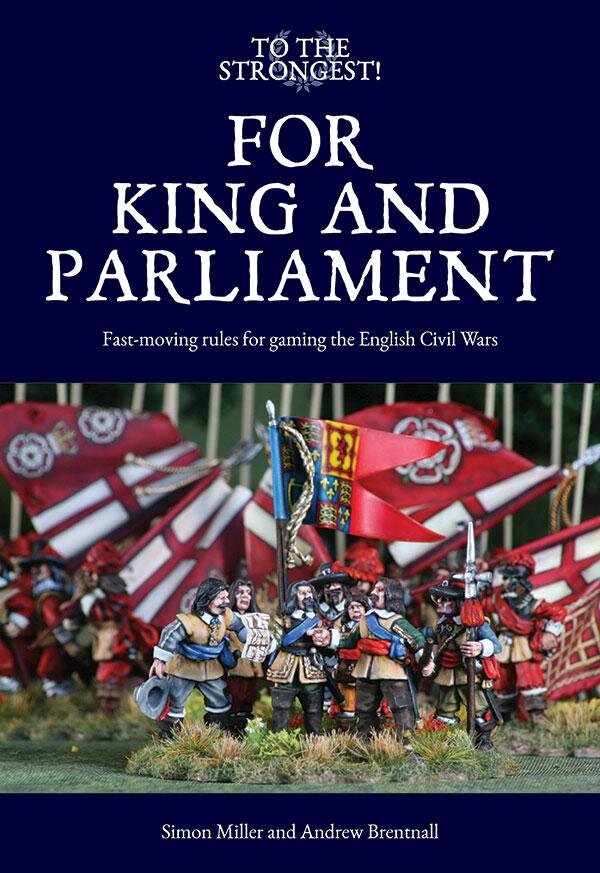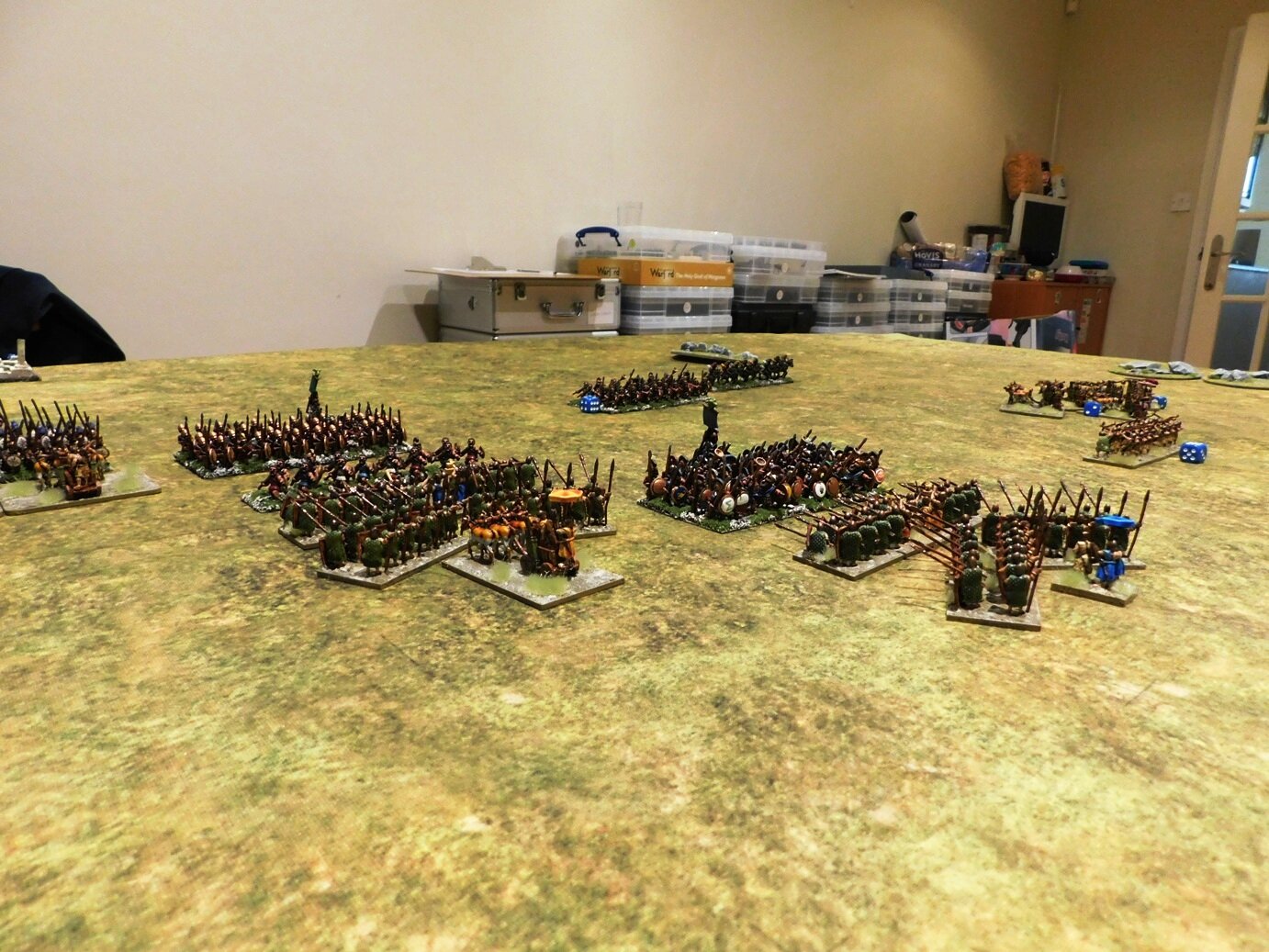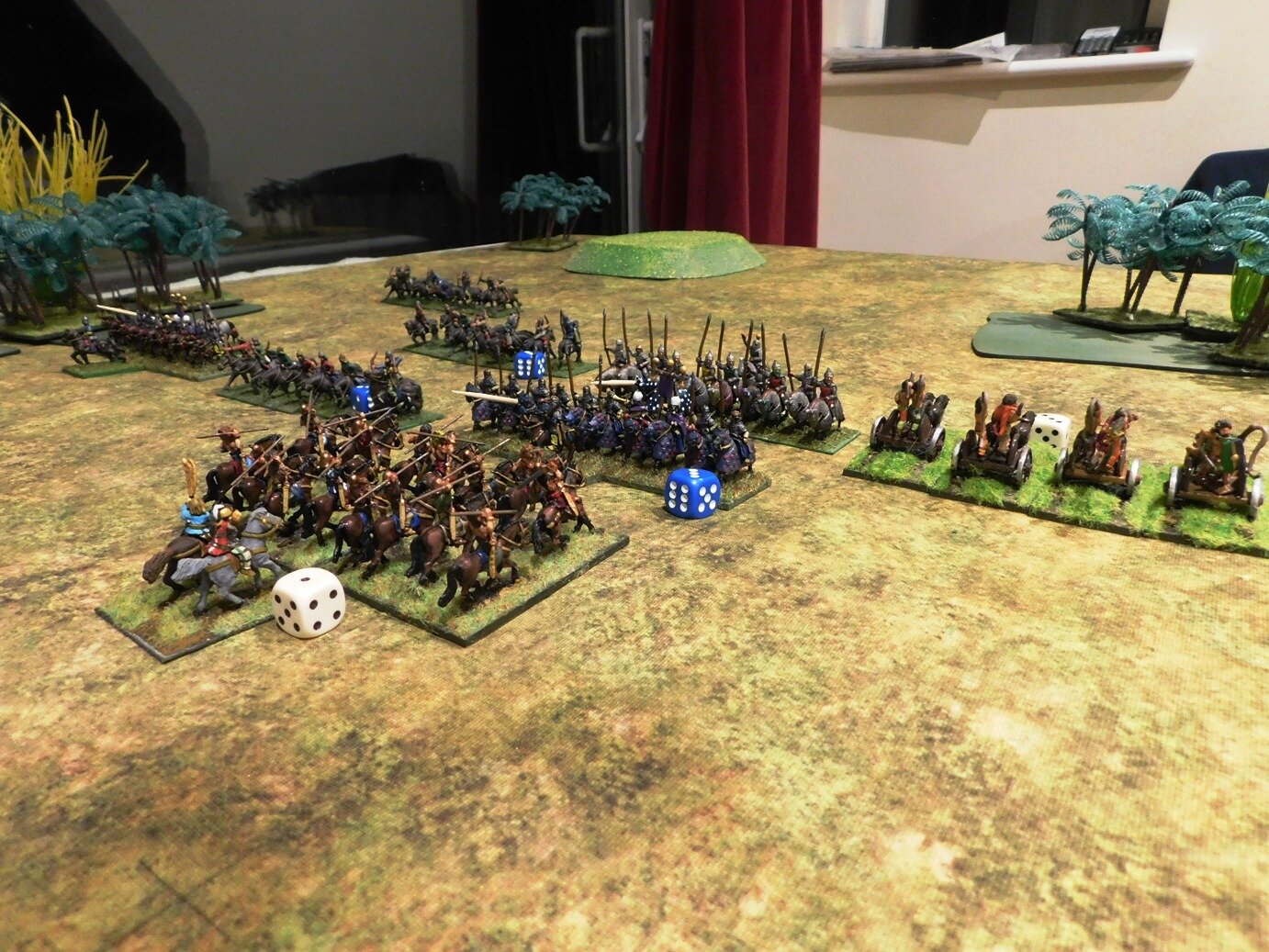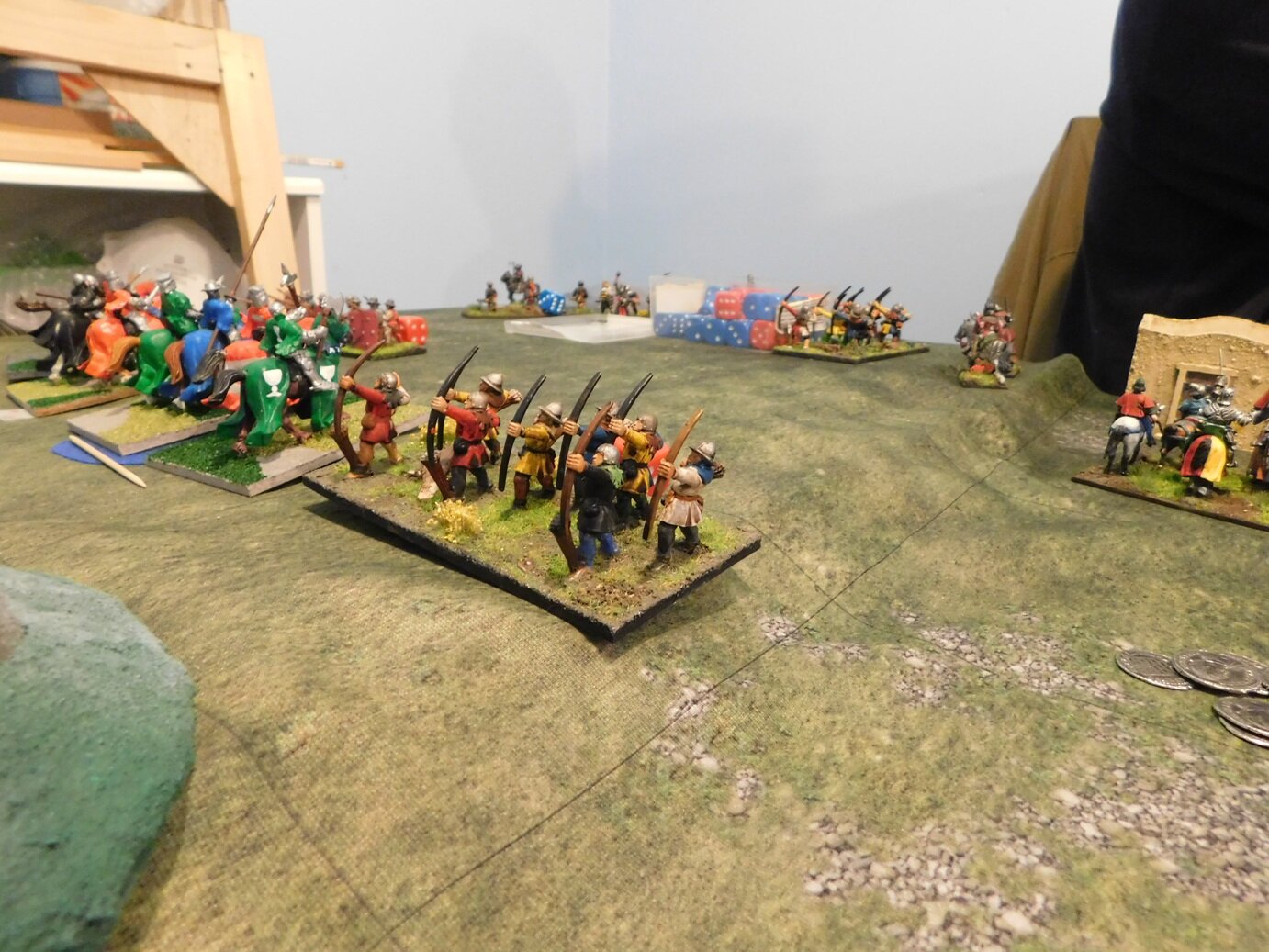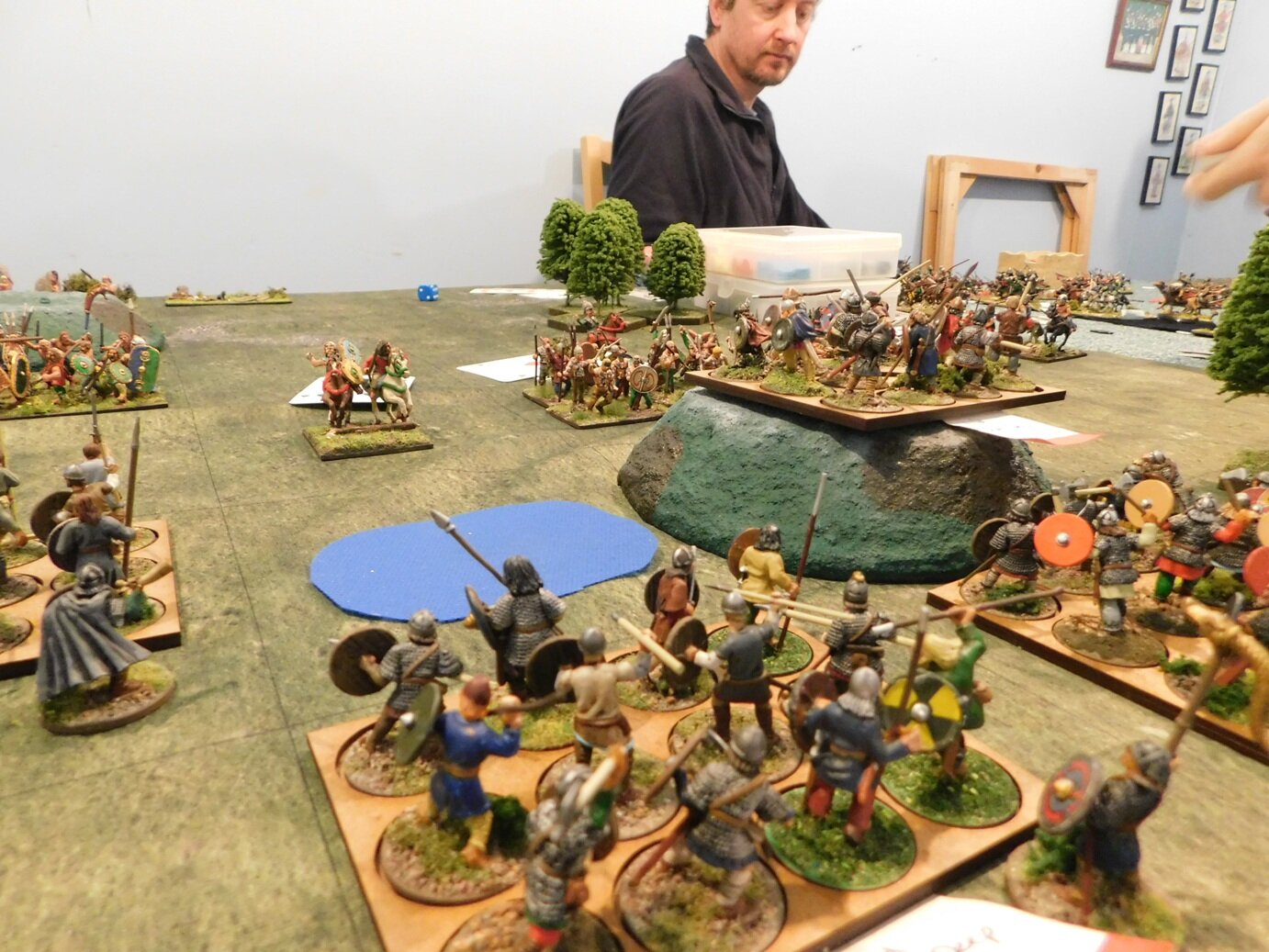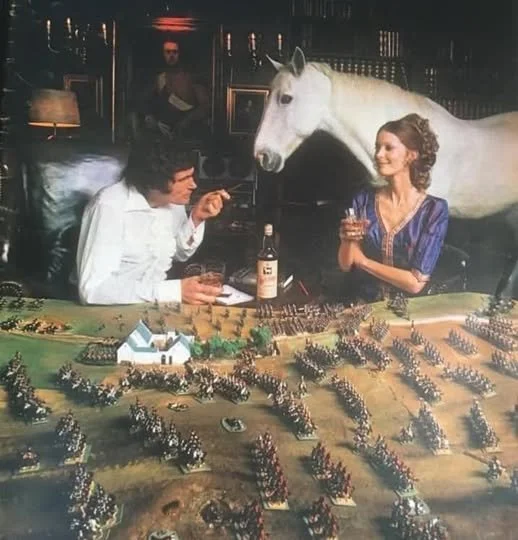The Battle
As I was badly outnumbered in the centre, my plan was to win on my left flank, hopefully helped by my returning foragers, and then roll up his line from the left before he could beat me in the center and on the right.
I had the first turn, and therefore concentrated my efforts on my cavalry: my infantry remaining still. One regiment of cavalry swept forward and charged one of their opposite number. Unlike TTS, multiple combat cards are regular in FK&P with, in this instance, five going down. Result: three hits, not enough saves, enemy cavalry destroyed. This was a good start, but the same thing happened to me on the Royalist go, so after one turn we were honours-even and no sign of the foragers.
Fortunately his infantry were obviously still having their hair done (Royalist fops!) so hadn’t moved towards me.
Second turn, same sort of result as the first, but disastrously my Commanding General had (somewhat foolishly) joined the cavalry charge and was killed in the melee. This cost me a serious number of victory coins as, in FK&P, losing officers is really painful, and that’s in addition to losing their command abilities. Worse, this time some of his infantry were on the move. Things were looking a bit grim.
Third turn, however, my foragers arrived and tipped the balance on the left. Now here’s the real fun of FK&P compared to TTS: if you charge on the flank you don’t get a measly one extra attack card: you get double what you’ve earned for a frontal attack!
Here’s two shots of my returning foragers hitting the right flank of his cavalry:



